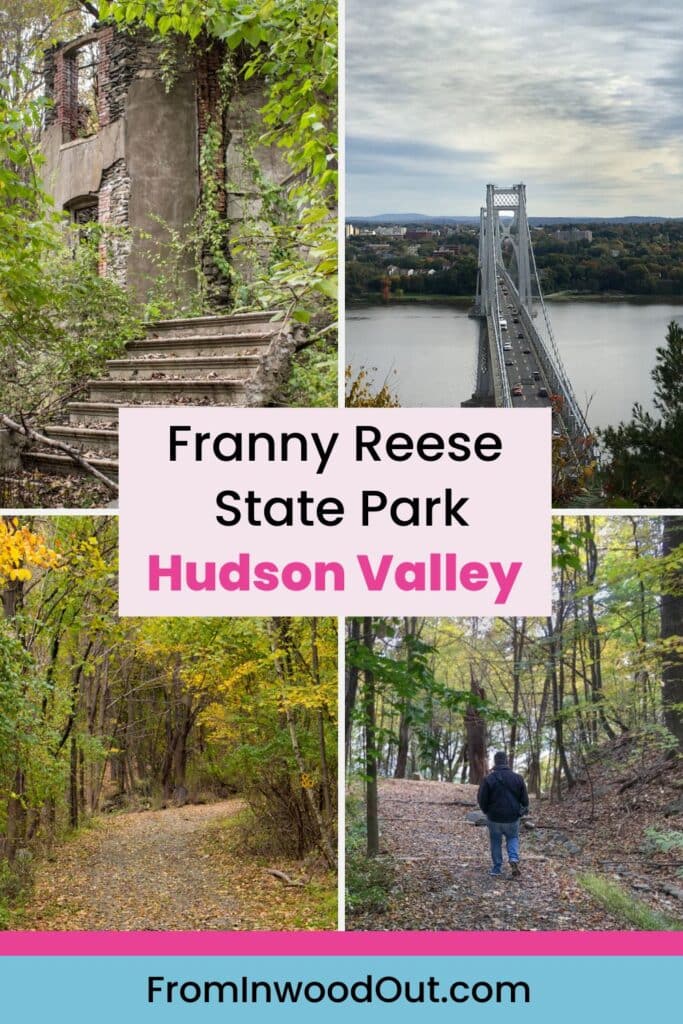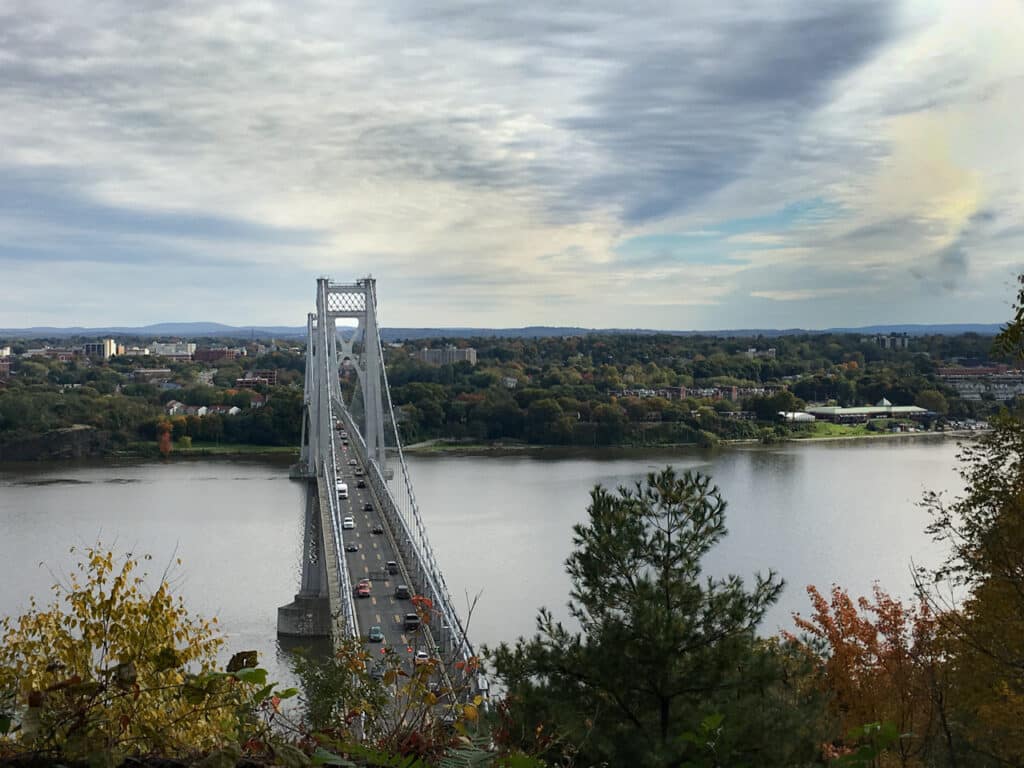
[Updated May 21, 2023] If you want to go hiking near Poughkeepsie and you love spotting abandoned ruins, head to Franny Reese State Park in Ulster County. The park is named after a woman who co-founded Scenic Hudson, an environmental group that put up a 17-year fight to save Storm King Mountain from certain destruction (more on this below).
There are also some fascinating ruins of an abandoned 19th century mansion scattered on the grounds of Franny Reese State Park. In short, the story of the the mansion begins with a self-made millionaire and dissolves into a family squabble over money.
Read on for more about the ruins, the hiking trails, and who Franny Reese was.
Hiking Franny Reese State Park
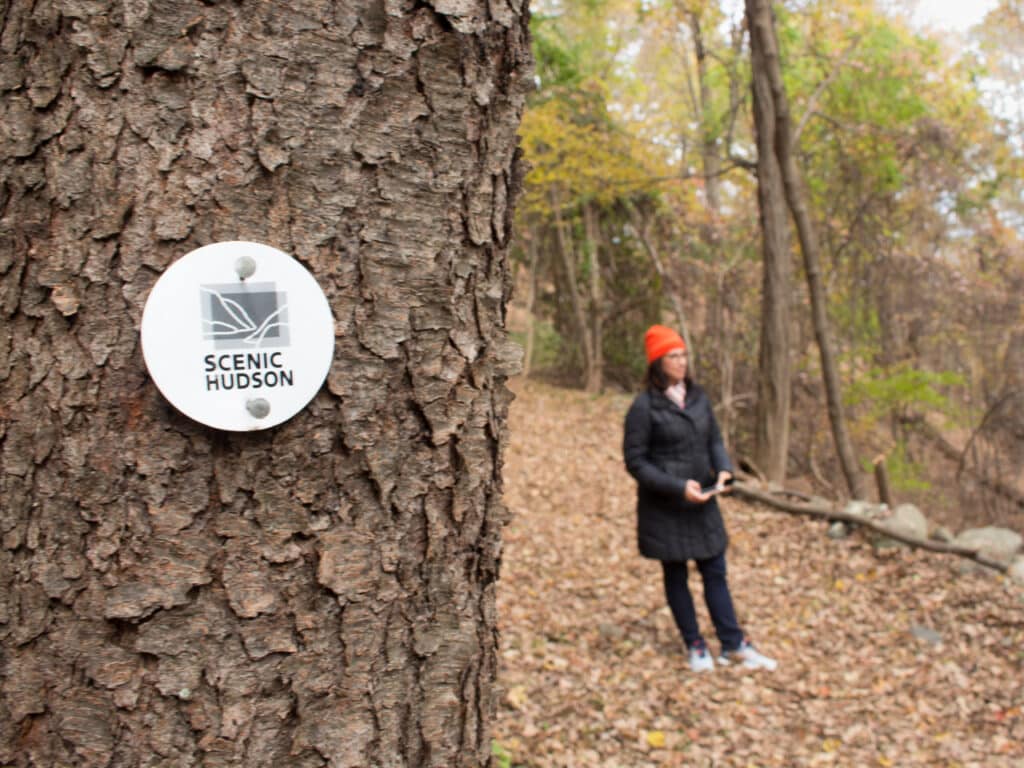
Three hiking trails are available at Franny Reese State Park.
The White Trail (1.76 miles) highlights several scenic overlook points, although we found the most spectacular view was at the overlook nearest to the Mid-Hudson Bridge. (In fact, we couldn’t find much of an “overlook” at any of the three others marked on the map).
The Yellow Trail and Blue Trail are shorter and it’s very possible to hike all three within a couple of hours, even with photo stops. This Trail Map also clearly marks where to find the building ruins, which you can’t actually get inside but are interesting to poke around nonetheless.
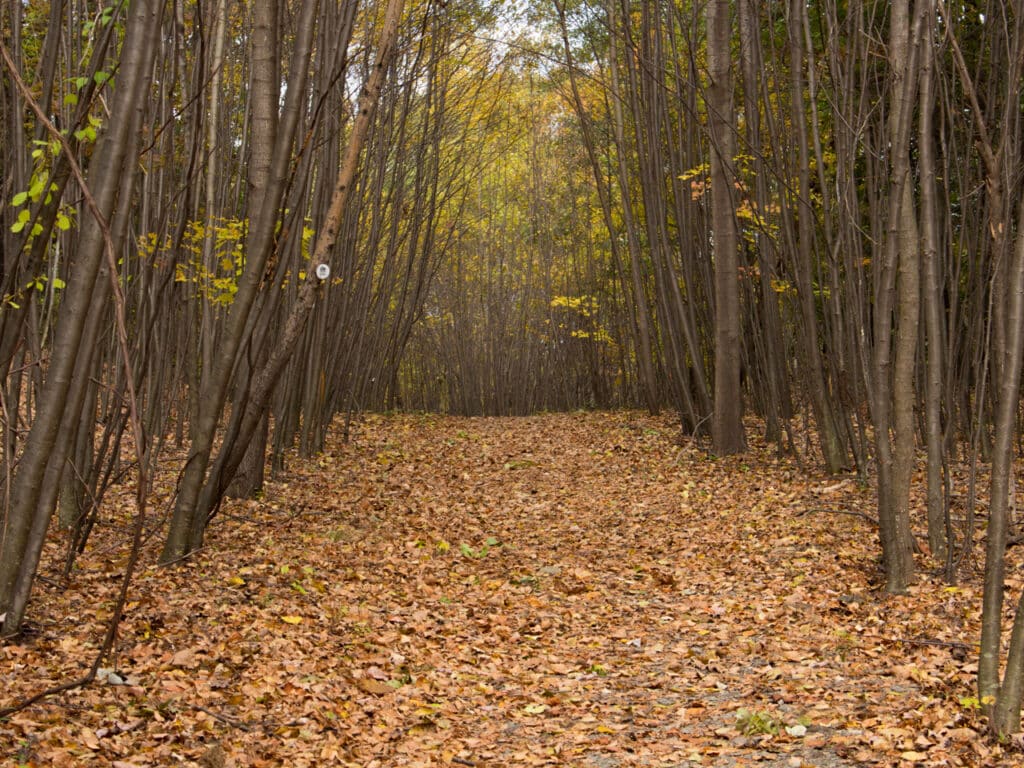
Hike the Hudson Valley (an excellent hiking resource) gives Franny Reese State Park a difficulty level of 3 out of 10. There are some points along the trail with gradual elevation but overall it won’t elevate your heart rate to any extreme levels. If you’re interested in nice and easy hiking near Poughkeepsie, this is the hike for you!
The park is open year-round, from dawn to dusk. Admission is free. Read on for more about Franny Reese, her history with Scenic Hudson, the ruins of Cedar Glen Estate, and information on how to access the park.
Who was Franny Reese?
In her obituary, the New York Times called Frances Reese (1917-2003) “the grande dame of the Hudson Valley.” She earned this title from her work with the environmental group she co-founded called Scenic Hudson.
Scenic Hudson’s origin story had a major impact both on the Hudson Valley and on the field of environmental law. Back in 1962, Consolidated Edison announced a plan to build a hydroelectric power plant at Storm King Mountain, located 40 miles north of New York City, on the west bank of the Hudson River.
It was supposed to be the world’s largest power plant of its kind and would cost $234 million dollars. The power plant, insisted Con Ed, was necessary. They promised minimal environmental impact, and a license was granted by the Federal Power Commission.
Enter Frances Reese and her cohort of concerned citizens. The group initiated legal action against Con Ed, which resulted in years of legal battles and put the project on hold.
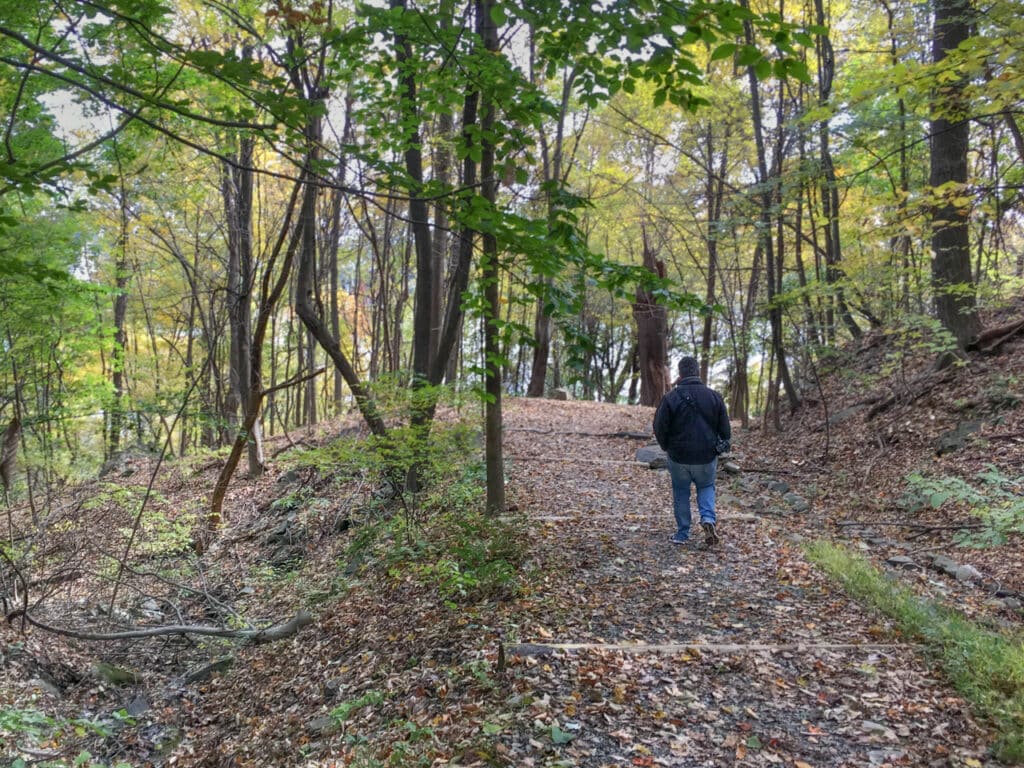
Scenic Hudson gained thousands of supporters throughout the United States. The Con Ed project threatened to damage the water supply to New York City, ruin Storm King’s natural beauty, and destroy an untold number of fish that relied on the Hudson River for survival.
Scenic Hudson filed their first complaint immediately after Con Ed’s announcement. They were still fighting years later when a New York Times article came out on August 20, 1970 that made it look like the issue was close to being resolved—in Con Ed’s favor.
After years of litigation, the Federal Power Commission had approved the project once again, citing that no location other than Storm King could “so well meet the requirements with lesser detriment to our environment.”
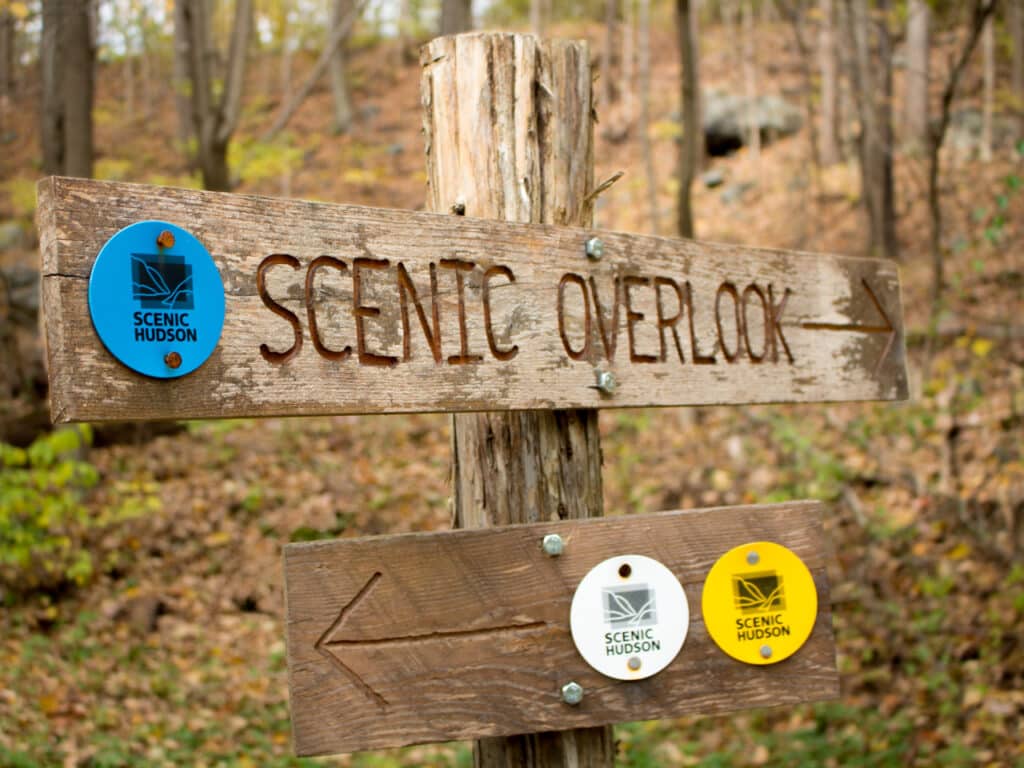
Scenic Hudson, along with the Hudson River Fisherman’s Association, appealed the decision, then sued the U.S. Army Corps of Engineers. Finally in 1980, 17 years after their initial announcement, Scenic Hudson won the fight and Con Ed dropped their plans.
The case of Scenic Hudson Preservation Conference v. Federal Power Commission was a landmark case, setting the precedent that citizens could sue on behalf of the environment, even if it wasn’t their own personal property that was in danger.
When Franny Reese passed away in 2003, Scenic Hudson purchased 253 acres of land and named it in her honor. The park opened to the public in 2009 when they transferred the land to the New York State Office of Parks, Recreation, and Historic Preservation.
See the Ruins of Cedar Glen
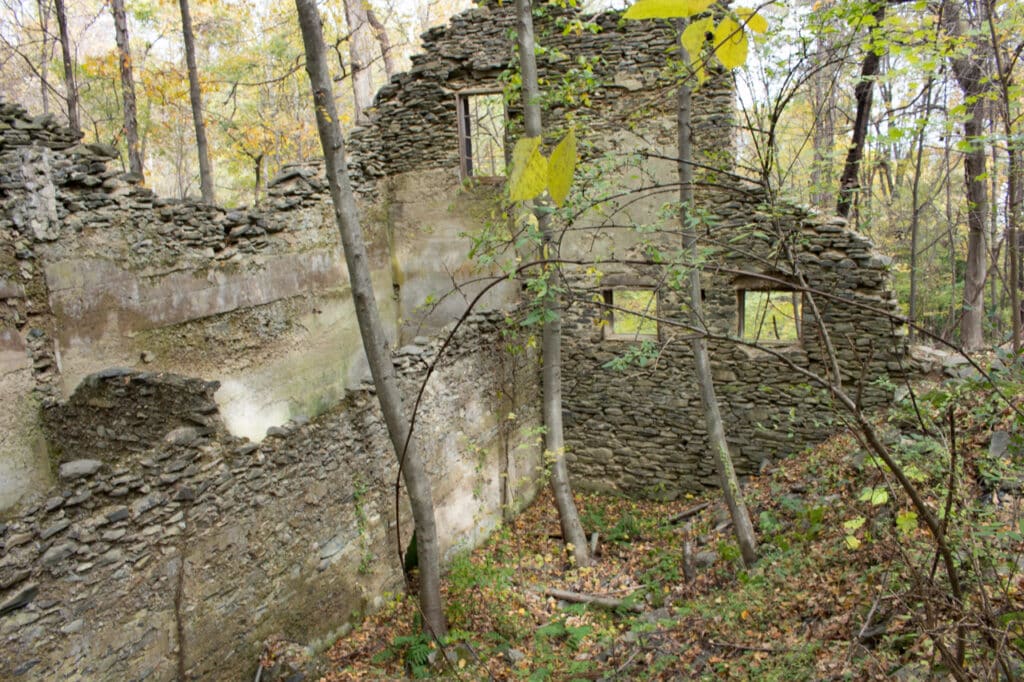
Everything’s a little scaled down at Franny Reese State Park. The hikes are short, and the ruins are minor compared to some scattered throughout the Hudson Valley. Still, they have a story to tell.
Charles H. Roberts was born in 1821 into a poor farming family. Determined to get educated, he attended Albany Medical College, working as a summer farmhand to fund his schooling.
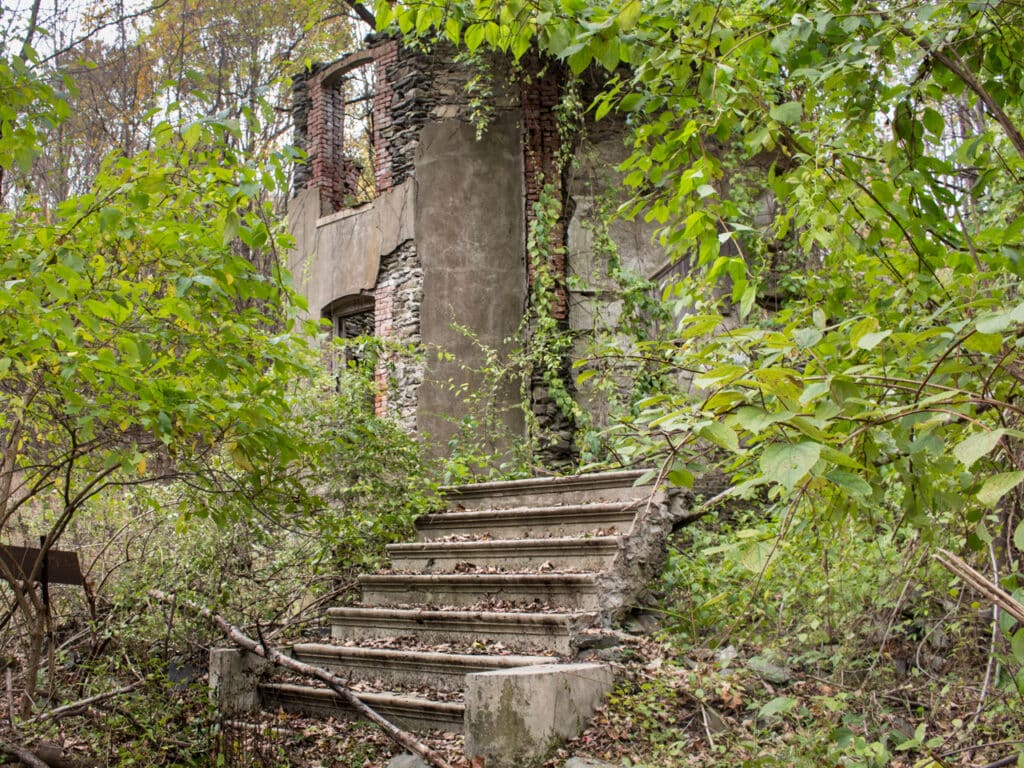
Roberts became a dentist. He made the early part of his fortune by developing dental anesthesia. Putting money into railroad stocks and other smart investments established his wealth further. He purchased his land along the Hudson River and in the 1860s, Cedar Glen estate was built.
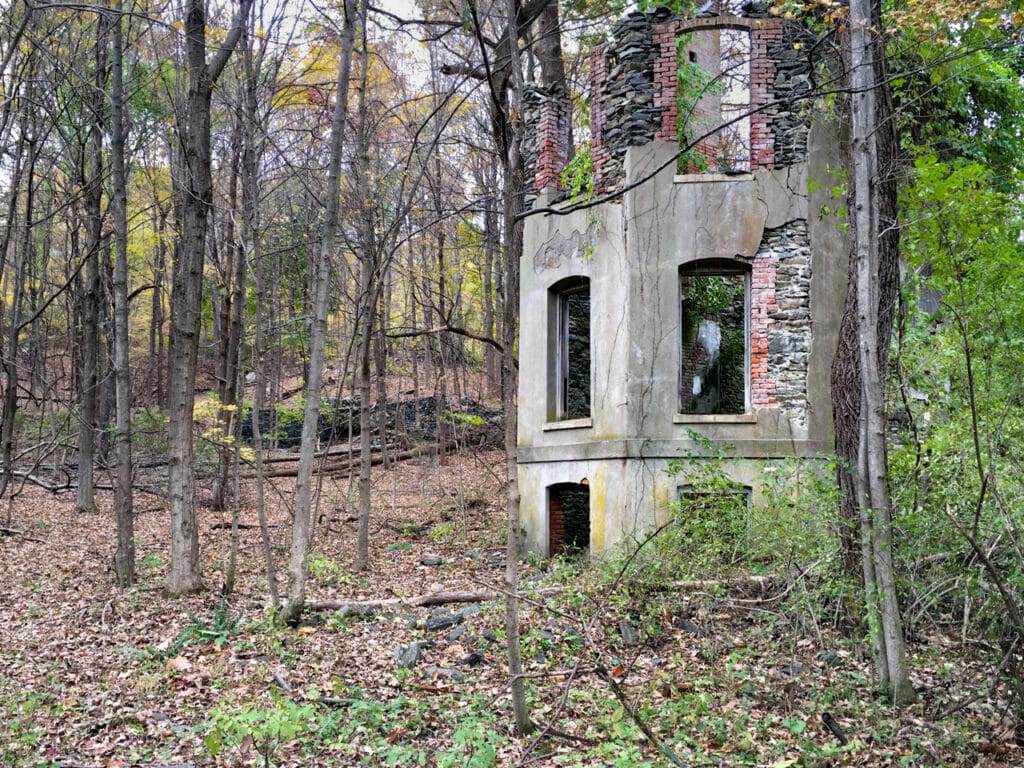
Roberts was far from the only rich man to build a Hudson Valley mansion. Boscobel (1808) and Lyndhurst (1838) were already in place, though the Vanderbilt Mansion (1898) and Rockefeller’s Kykuit Estate (1912) were still decades away from construction.
Cedar Glen was quite opulent, consisting of two mansions, a carriage house, servant’s quarters, and several additional outbuildings scattered around the land. Roberts also created scenic drives throughout the property to take full advantage of the picturesque location.
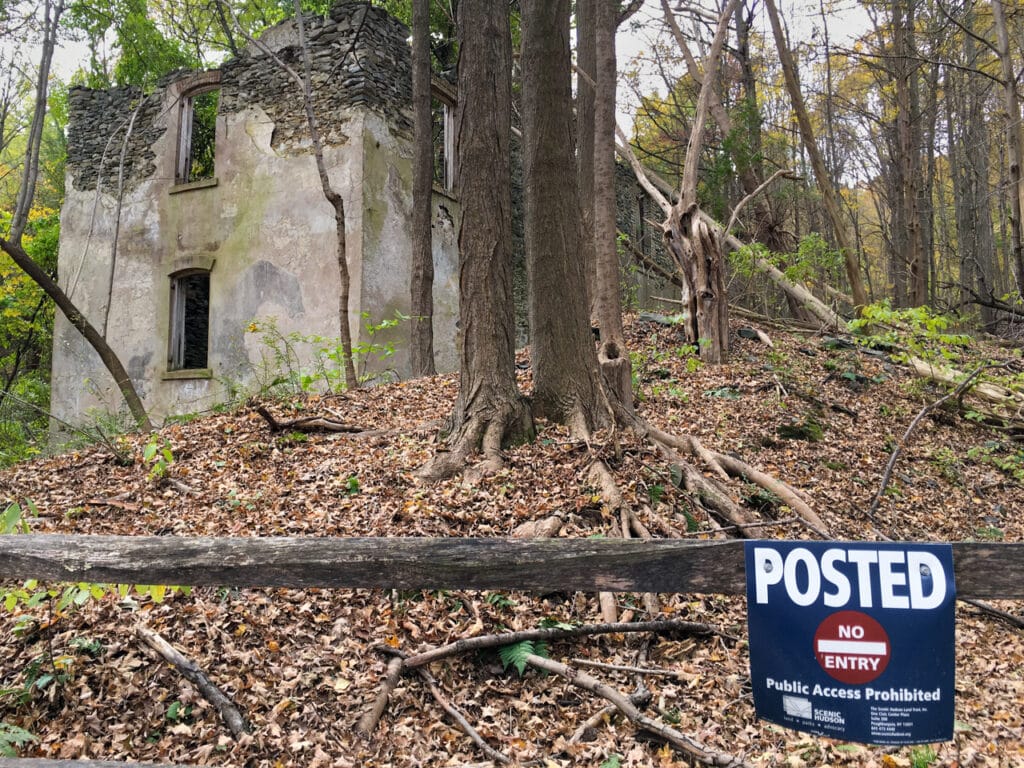
He and his wife Catherine Freeman raised six children at Cedar Glen and Roberts grew to old age there, passing away at age 88. By the time he died, his children had been embroiled in a family fight over Roberts’ wealth. In 1946, when his daughter Frances, who was the legal property owner, died, the estate had already fallen into disrepair. It was completely abandoned until 1969, by which point it was in near total ruins.
How to Get to Franny Reese State Park
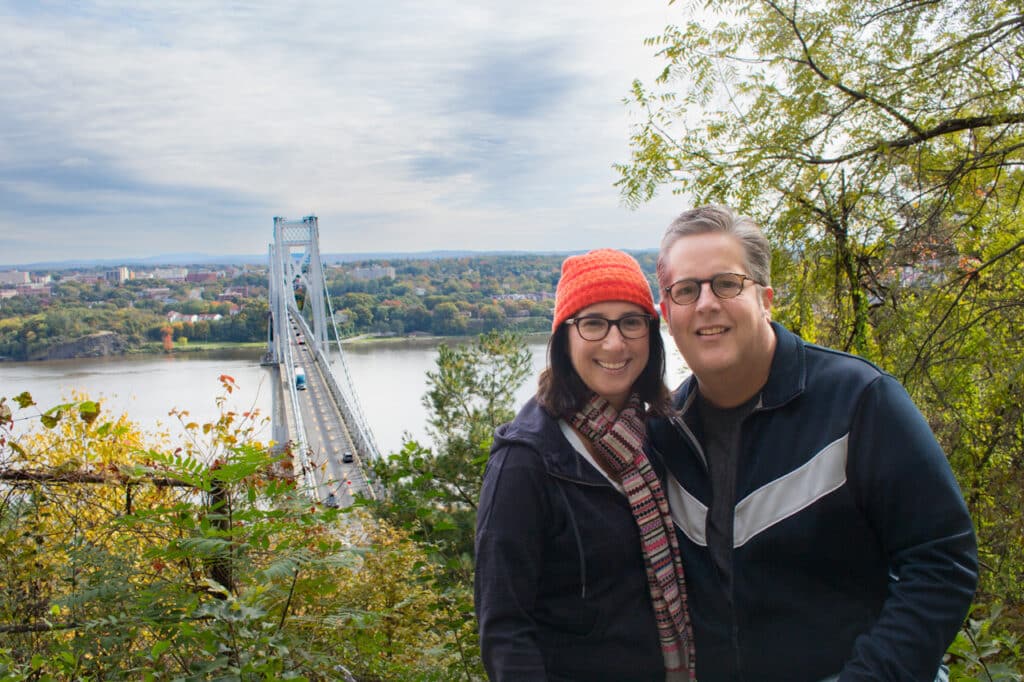
- DRIVE: Parking lots located at: Johnson-Iorio Park, Haviland Road AND 129 Macks Lane.
- WALK: The park connects to the Walkway Loop Trail. You’ll hit it after crossing the Mid-Hudson Bridge.
- TRAIN: Metro-North and Amtrak both serve Poughkeepsie Train Station. The train station is opposite the river but is in walking distance to the Walkway Loop Trail.
Like this post? Pin and save for future reference!
